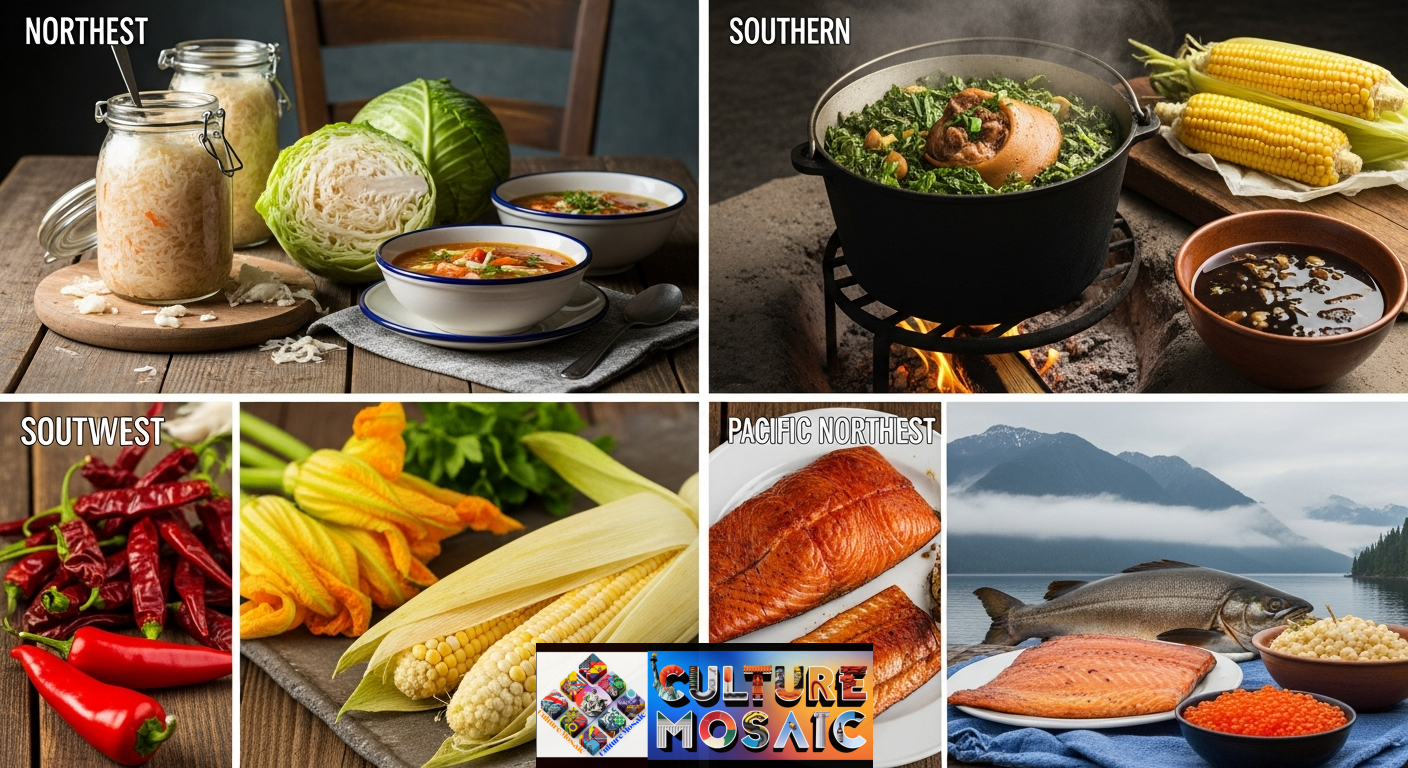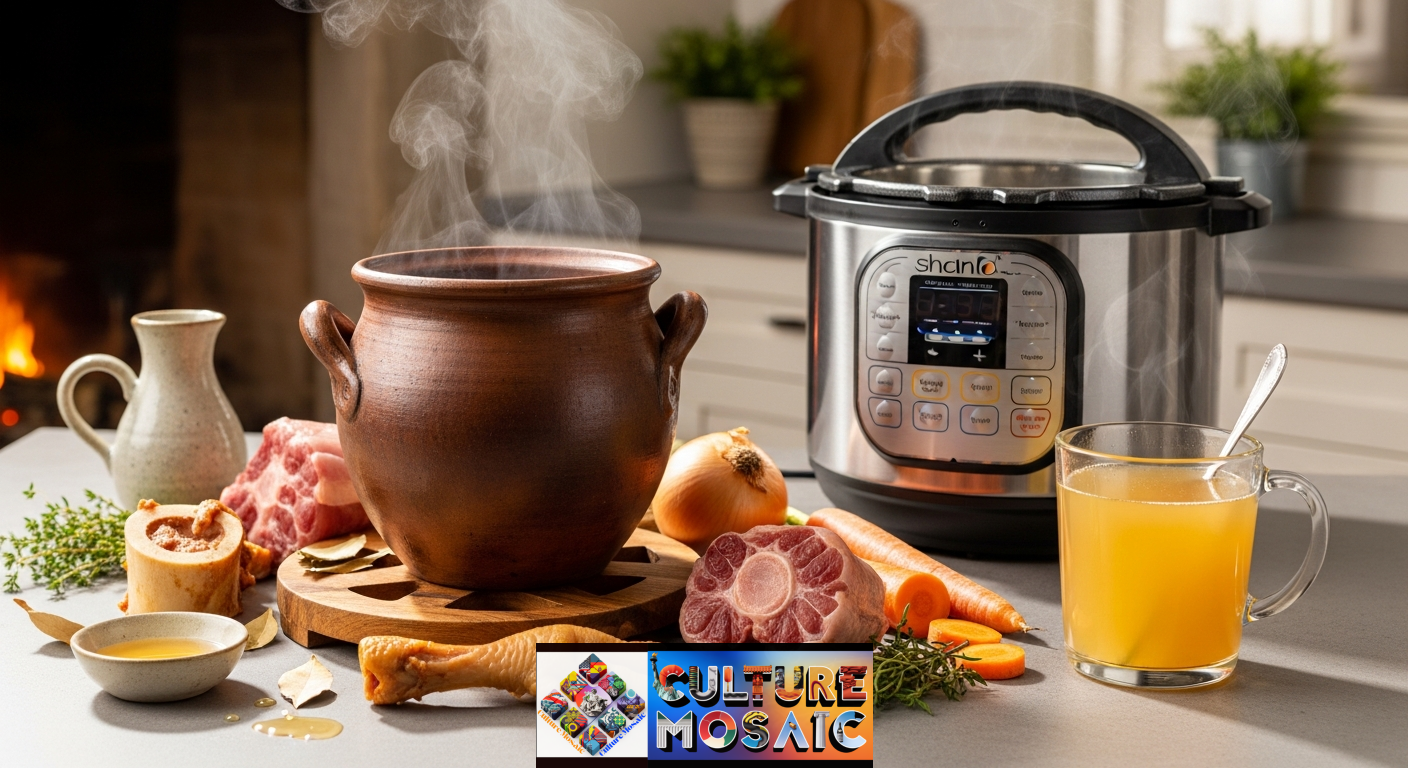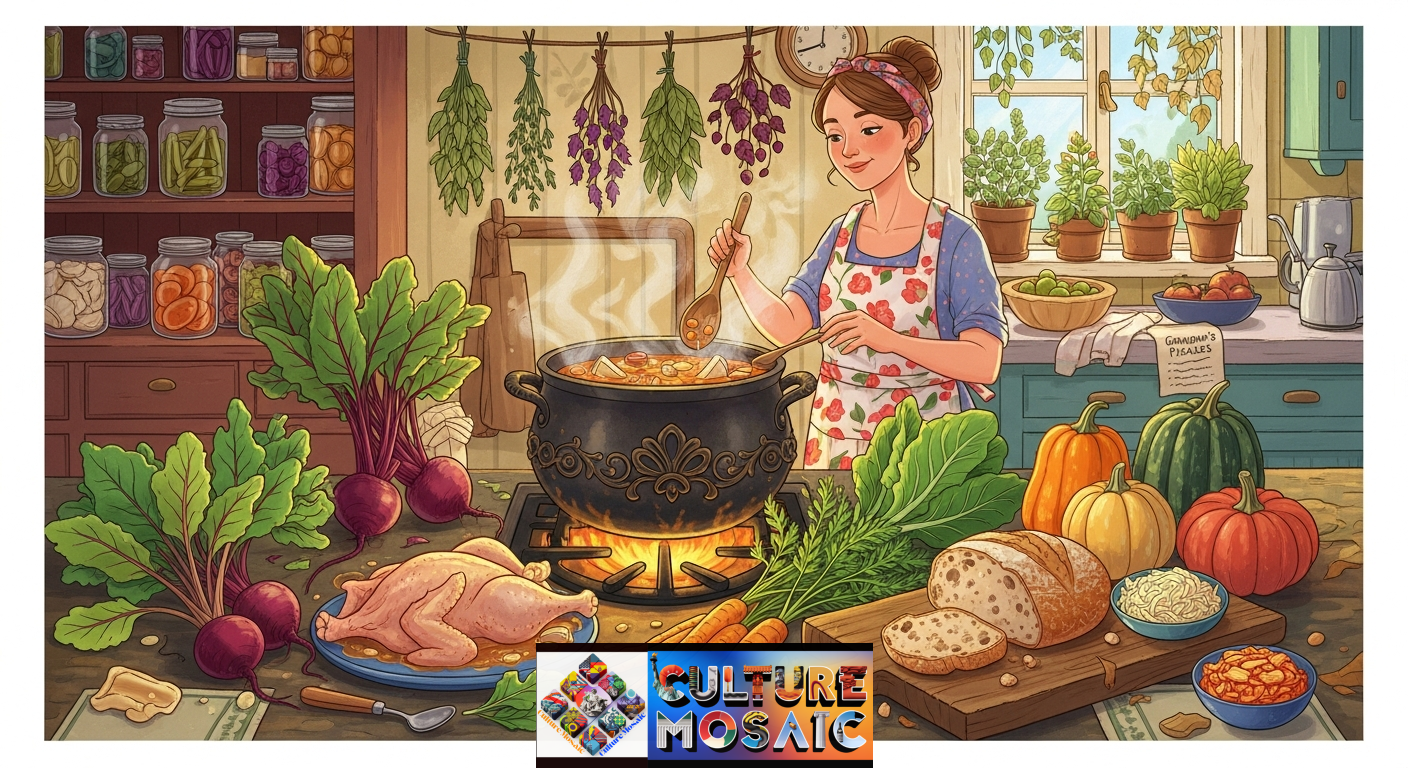There’s a quiet revolution happening in American kitchens, and it smells like simmering bone broth and fermented vegetables. Home cooks are rediscovering what their great-grandmothers knew instinctively: nothing should go to waste, and the best flavors often hide in the parts we’ve been throwing away.
This isn’t about deprivation or sacrifice. It’s about reconnecting with heritage culinary traditions that treated ingredients with respect—because when you’ve grown something yourself or traded precious resources for it, you honor every last bit.
Understanding Heritage Culinary Traditions in the Modern Kitchen
Heritage culinary traditions encompass the cooking methods, preservation techniques, and ingredient wisdom passed down through generations within specific cultural and regional communities. These aren’t museum pieces—they’re living practices that evolved from necessity, ingenuity, and deep respect for seasonal cycles.
What made these traditions inherently sustainable wasn’t ideology but practicality. Appalachian families couldn’t afford to discard turnip greens. Louisiana cooks used every part of the crawfish. Native American communities honored the entire buffalo. These practices emerged from genuine need, creating culinary systems that wasted virtually nothing.
Today’s sustainability movement is essentially rediscovering what heritage cooks never forgot. The difference? We’re choosing these methods consciously rather than out of necessity, which gives us the luxury of appreciating their elegance and wisdom.
The Zero-Waste Secrets Hidden in Regional Heritage Culinary Traditions

Every American region developed distinctive approaches to using ingredients completely. In the Northeast, colonial preservation techniques transformed cabbage into sauerkraut that lasted through harsh winters. The brine wasn’t discarded—it became the base for soups and the starter for new fermentation batches.
Southern heritage culinary traditions epitomize nose-to-tail cooking. Ham hocks flavored pots of beans, then the meat was picked clean, and the bones simmered into rich stock. Collard green stems, often discarded today, were diced into “pot liquor”—the nutrient-dense liquid that remained after cooking greens, considered the healthiest part of the dish.
In the Southwest, indigenous and Spanish influences created traditions where chile stems became tea, dried chile seeds were ground into spice blends, and squash blossoms were treated as delicacies rather than agricultural waste. Corn went beyond kernels: husks wrapped tamales, cobs enriched stock, and even the silk was brewed for medicinal teas.
The Pacific Northwest’s salmon culture mosaic exemplifies total ingredient utilization. Native communities smoked the flesh, rendered the skin into crispy “salmon bacon,” made soup from the heads and bones, and used the roe in multiple preparations. Nothing was superfluous; every element had purpose and cultural significance.
How Traditional Preservation Methods Support Heritage Culinary Traditions

Fermentation, pickling, drying, and curing weren’t hobbies—they were survival strategies that happened to create extraordinary flavors. These preservation methods define heritage culinary traditions across every American region, turning abundance into year-round sustenance.
Consider fermentation: sauerkraut, kimchi, and pickles all emerged because our ancestors needed vegetables to survive winter. The fermentation process not only preserved food but enhanced its nutritional value, creating probiotics before anyone knew that word. Your great-grandmother’s pickle crock in the basement was actually a sophisticated biotechnology lab.
Appalachian canning traditions transformed summer’s bounty into pantry staples. Tomatoes, peaches, green beans—everything got preserved at peak ripeness. The techniques required precision and care, with recipes passed down as carefully as family heirlooms. Today’s mason jar aesthetic in trendy restaurants? That’s heritage culinary traditions coming full circle.
Drying and smoking gave us jerky, dried fruit leather, and smoked fish—concentrated flavors that traveled well and lasted months. Native American pemmican combined dried meat, rendered fat, and dried berries into calorie-dense travel food that sustained hunting parties and winter camps. Modern energy bars are essentially reinventing this ancient formula with fancier packaging.
Salt curing and brining preserved meats before refrigeration existed. Country ham, salt pork, and corned beef all emerged from these heritage culinary traditions. The high sodium content we now worry about? That was the preservative that made protein available year-round in pre-industrial America.
Root-to-Stem Cooking: Where Heritage Culinary Traditions Meet Modern Sustainability

The root-to-stem movement sounds contemporary, but it’s actually a return to heritage culinary traditions that our grandmothers practiced without giving it a name. They simply cooked this way because discarding food felt wrong—morally and economically.
Take beets, a vegetable that exemplifies total utilization. Heritage cooks roasted the roots, sautéed the stems like Swiss chard, and used the greens in salads or soups. The cooking liquid became the base for borscht or was saved to dye Easter eggs. Modern chefs are “discovering” these applications as if they’re innovative, but they’re simply reviving forgotten wisdom.
Carrot tops, often composted today, were standard ingredients in heritage culinary traditions. They made vibrant pestos, chimichurris, and tea. The flavor is intense—more concentrated than the root itself—with a slightly bitter, herbal quality that adds complexity to dishes.
Broccoli and cauliflower stems present another example. Heritage cooks never discarded these; they peeled away the tough exterior and used the tender core for slaws, pickling, or dicing into stir-fries. The stems are actually sweeter and milder than the florets, with a satisfying crunch.
Onion and garlic skins accumulate in every kitchen, but heritage culinary traditions found uses even for these papery layers. They enriched stock with color and subtle flavor, were used as natural dyes, and even made paper. Leek tops, too tough for most preparations, became essential stock ingredients that added depth and sweetness.
The Bone Broth Renaissance: Ancient Heritage Culinary Traditions for Modern Wellness

Bone broth has become a trendy wellness product selling for $10 per cup in urban cafés, but it’s actually one of the most fundamental heritage culinary traditions across virtually every culture. What changed isn’t the recipe—it’s our willingness to spend twelve hours simmering something our grandmothers made automatically.
Traditional bone broth utilized what butchering left behind: bones, cartilage, chicken feet, oxtails—the parts that couldn’t be sold as prime cuts. These collagen-rich ingredients created liquid gold, packed with minerals and amino acids. Jewish penicillin, Korean seolleongtang, and Vietnamese pho—all emerged from this same impulse to extract every bit of nutrition from an animal.
The technique hasn’t changed in centuries. Roast bones for depth of flavor, cover with cold water, add aromatics and a splash of acid to extract minerals, then simmer low and slow. Heritage cooks knew the gelatin that forms when broth cools meant they’d done it right. They didn’t need scientific studies to tell them it was healing food.
What’s shifted is our relationship to time. Heritage culinary traditions assumed someone was home tending the stove—a reality that doesn’t match modern life. Today’s cooks adapt with slow cookers and pressure cookers, speeding up the process while honoring the tradition. The instant pot meets the stockpot, and both honor the same fundamental practice.
The nutritional science behind bone broth validates what traditional cooks always knew: the gelatin supports joint health, the glycine aids sleep and digestion, and the minerals strengthen bones. Heritage culinary traditions weren’t superstition—they were empirical observation honed over generations.
Fermentation: The Living Legacy of Heritage Culinary Traditions
Fermentation represents perhaps the most sophisticated category of heritage culinary traditions, turning preservation into flavor transformation. The microorganisms doing the work are the same ones our ancestors cultivated, passed from batch to batch through generations.
Sourdough starters exemplify this living heritage. Some bakeries maintain starters over a century old, each feeding incorporating flour and water into a culture descended from their founder’s kitchen. The complex flavors in sourdough bread—that tangy depth—come from wild yeasts and bacteria that vary by region, creating genuine terroir in bread.
Lacto-fermentation—the process behind sauerkraut, kimchi, and traditional pickles—requires only vegetables, salt, and time. Heritage culinary traditions developed specific ratios and timing by trial and error long before microbiology explained why it worked. The salt creates an environment where beneficial lactobacillus bacteria thrive while harmful microbes can’t survive.
Every culture developed fermented vegetables suited to their climate and available produce. German sauerkraut, Korean kimchi, Japanese tsukemono, Middle Eastern torshi—all variations on the same fundamental process. What changed was the vegetables, aromatics, and spices that reflected each culture’s palate.
Fermented dairy products like yogurt, kefir, and buttermilk emerged from similar traditions. Before refrigeration, fresh milk spoiled quickly. Controlled fermentation preserved it while adding probiotics that aided digestion. Heritage culinary traditions often gave fermented dairy to children and elders because experience showed it was easier to digest than fresh milk.
Seasonal Eating: The Calendar That Guided Heritage Culinary Traditions
Heritage culinary traditions operated on seasonal rhythms out of necessity, but modern science validates the benefits. Eating seasonally means consuming produce at peak nutrient density, supporting local ecosystems, and connecting with natural cycles that industrial agriculture has obscured.
Spring in heritage kitchens meant foraged greens—ramps, dandelion, fiddleheads—that appeared briefly and were celebrated accordingly. These foods helped replenish vitamins depleted during winter, a nutritional transition our ancestors understood intuitively. Spring also brought the first fresh dairy as animals went back on pasture, creating lighter, more delicate butter and cheese.
Summer abundance drove preservation efforts. Heritage culinary traditions focused on capturing peak-season flavor through canning, pickling, and drying. Tomatoes, berries, and stone fruits—everything got processed and stored. The work was intense but essential, and communal canning sessions became social events that strengthened community bonds.
Fall harvests brought root vegetables, winter squash, and apples—foods that stored well in cool cellars. Heritage cooks understood which varieties kept longest, how to store them properly, and how to rotate through supplies so nothing spoiled. This knowledge was survival information, passed down with the precision of any technical manual.
Winter cooking in heritage culinary traditions emphasized preserved foods and storage crops. Meals became heartier, relying on dried beans, cured meats, root vegetables, and preserved fruits. The cuisine wasn’t diminished—it was adapted, finding richness and satisfaction in a more limited palette.
Bringing Heritage Culinary Traditions Into Your Contemporary Kitchen
Adopting heritage culinary traditions doesn’t mean abandoning modern conveniences or romanticizing the past. It means selectively reviving practices that make sense for your life while honoring the wisdom they contain.
Start small. Save vegetable scraps in a freezer bag until you have enough to make stock. This single practice—turning “waste” into liquid gold—will transform your cooking and give you a tangible connection to heritage culinary traditions. The stock will taste better than anything you can buy, and you’ll have made something from nothing.
Choose one preservation method to master. Pickling is beginner-friendly, requiring minimal equipment and producing results within days. Follow a trusted recipe precisely—heritage culinary traditions developed specific ratios for safety and flavor. Once you’ve made a few successful batches, experiment with different vegetables and spice combinations.
Connect with your own heritage. Interview older relatives about how they cooked, what recipes they learned from their parents, and what techniques they use without thinking. These conversations preserve cultural knowledge while giving you a personal connection to heritage culinary traditions. Write down what you learn; these become heirloom recipes more valuable than any vintage cookbook.
Shop seasonally and locally when possible. Visit farmers’ markets and ask vendors about unusual varieties, preservation techniques, and seasonal specialties. Farmers are often repositories of regional us cuisine heritage culinary traditions, and love sharing knowledge with curious customers.
Practice root-to-stem cooking deliberately. Before discarding any part of a vegetable, research whether it’s edible and how heritage cooks used it. You’ll discover that much of what enters your compost bin could have enriched your meals instead.
The Cultural Preservation Value of Heritage Culinary Traditions
Heritage culinary traditions carry more than recipes—they preserve cultural identity, regional history, and community bonds. When we lose traditional cooking knowledge, we lose connections to our past and the people who came before us.
Many heritage culinary traditions emerge from marginalized communities whose contributions have been overlooked or appropriated. Soul food, Cajun cuisine, Native American cooking, and immigrant foodways all represent distinct cultural heritages that deserve recognition and respect. Learning these traditions means acknowledging their origins and the communities that developed them.
The revival of heritage culinary traditions also supports food sovereignty—communities’ rights to control their food systems. When indigenous groups reclaim traditional foods and cooking methods, they’re asserting cultural identity and rejecting the industrial food system that marginalized them. This work is simultaneously culinary, political, and spiritual.
Regional heritage culinary traditions also preserve biodiversity. Traditional recipes often feature heirloom varieties developed over generations to thrive in specific climates and soils. When these recipes fade, the seeds that supplied them often disappear too. Cooking heritage varieties keeps them in cultivation and preserves genetic diversity that industrial agriculture has eliminated.
Food traditions also transmit intangible knowledge about community care, seasonal rhythms, and sustainable resource use. The grandmother teaching her grandchild to can tomatoes isn’t just preserving fruit—she’s passing down patience, precision, respect for seasons, and the satisfaction of providing for your family. These lessons matter as much as the finished jars.
Frequently Asked Questions About Heritage Culinary Traditions
What exactly are heritage culinary traditions?
Heritage culinary traditions are cooking methods, preservation techniques, and food practices passed down through generations within specific cultural or regional communities. These traditions evolved from practical necessity, local ingredients, and seasonal availability, creating sustainable food systems long before “sustainability” became a buzzword. They encompass everything from fermentation and curing to root-to-stem cooking and seasonal eating patterns that honor natural cycles.
How do I start incorporating heritage culinary traditions into a modern, busy lifestyle?
Begin with one manageable practice that fits your routine. Saving vegetable scraps for homemade stock requires only freezer space and an occasional afternoon. Making a weekly batch of pickled vegetables takes minimal time but connects you to preservation traditions. The key is starting small rather than attempting a complete lifestyle overhaul. Focus on practices that genuinely interest you—enthusiasm matters more than perfection when learning heritage techniques.
Are heritage culinary traditions actually more sustainable than modern cooking?
Yes, traditional cooking methods were inherently sustainable because they emerged from necessity and resource scarcity. Heritage cooks couldn’t afford waste, so they developed sophisticated systems for using entire ingredients, preserving seasonal abundance, and creating closed-loop food systems.
Modern industrial food production prioritizes convenience and profit over sustainability, while heritage culinary traditions prioritize resourcefulness and respect for ingredients. However, sustainability also requires adapting traditions to contemporary contexts rather than romanticizing the past.
Can I adapt heritage culinary traditions to dietary restrictions and preferences?
Absolutely. Heritage culinary traditions are remarkably flexible because they evolved through constant adaptation to available ingredients and changing circumstances. Vegetarians can embrace preservation techniques, root-to-stem cooking, and fermentation while skipping bone broth and nose-to-tail practices. The underlying principles—using whole ingredients, cooking seasonally, minimizing waste—apply regardless of dietary preferences. Many traditional cultures also have rich plant-based culinary heritages worth exploring.
Where can I learn authentic heritage culinary traditions from my own cultural background?
Start with family members, particularly older relatives who learned cooking before industrial convenience foods dominated. Ask specific questions about techniques, not just recipes—how they preserved food, what they did with scraps, how they cooked seasonally. Community cultural centers, historical societies, and ethnic groceries often offer cooking classes featuring traditional methods.
Regional and Ethnic Cookbooks
Regional and ethnic cookbooks—particularly older ones—preserve techniques that newer books assume are obsolete. Online communities focused on traditional foodways also share knowledge generously, though personal connections to your heritage provide the richest learning. The root-to-stem revival isn’t really about trends or sustainability points. It’s about recognizing that the people who came before us weren’t naive or unsophisticated—they were solving real problems with elegant solutions we’re only now beginning to appreciate again. Heritage culinary traditions offer us a different relationship with food, one based on respect rather than convenience, on connection rather than consumption.
Your kitchen can become a place where past and present meet, where your grandmother’s wisdom mingles with your contemporary concerns, where sustainability isn’t a chore but a return to practices that simply make sense. The bone broth simmering on your stove isn’t just soup—it’s a conversation across generations, a recognition that some knowledge deserves to be preserved as carefully as the food itself.

